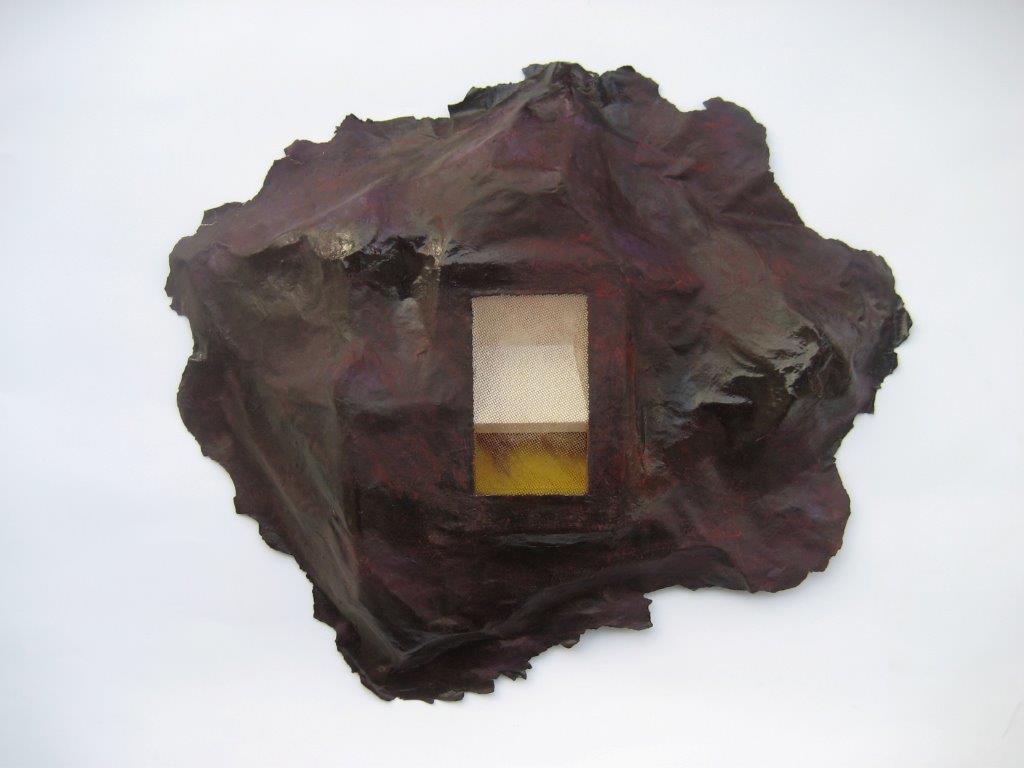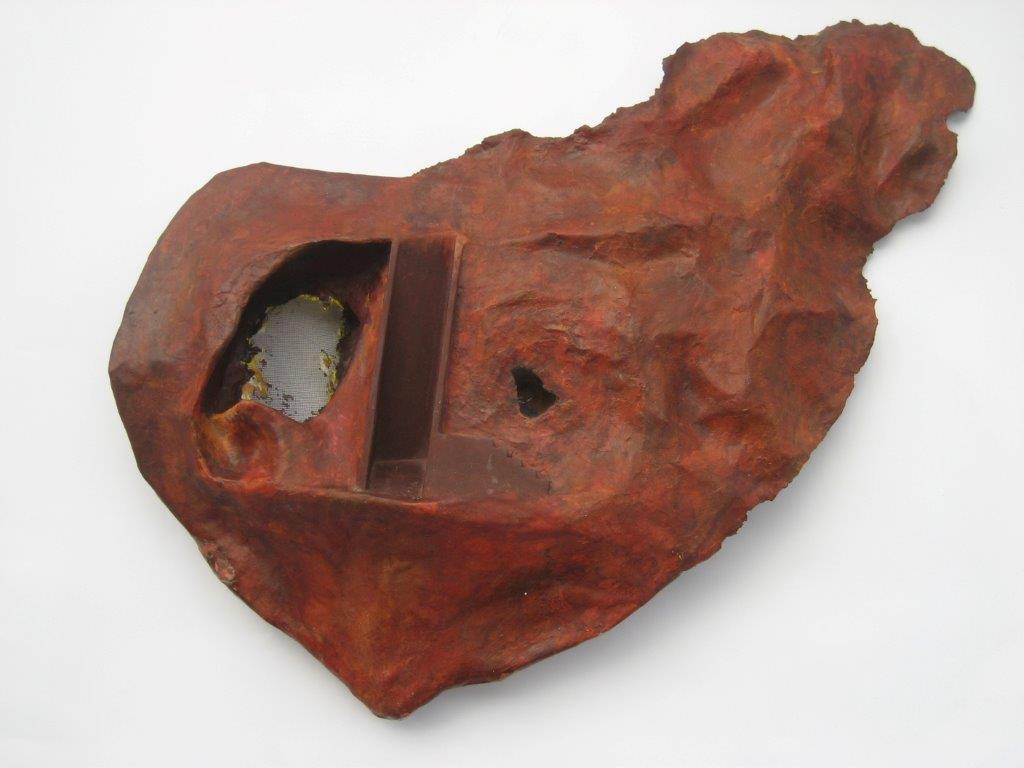SENZA TITOLO - Claudio Fazio
CLAUDIO FAZIO
No Title
1982
Inaugurated on December 16th, 2015 until March 31st, 2016
Curated by Antonio Capaccio
The showcase is accompanied by text in catalogue of Carola Susani and Antonio Capaccio.
Two caves, both scabrous and bright, each cave has an opening, the opening isn’t a balcony, it is not wide open, it has ravines, screens, opacity, and transparencies. In the allegory of the cave by Plato truth is outside and the prisoners are chained since childhood. They only see shadows and to these shadows they assign reality and consistency. But we are now outside Claudio Fazio’s cave, outdoors. We lean towards the inside of the cave. Maybe the secret, the truth, is inside? Sealed in its depths? Maybe it isn’t that. Maybe the secret is neither outside nor inside, possibly is in the opening, in the window that reveals one another. The secret lays in the intuition of the aperture, in its duality. Claudio Fazio’s work – as well as his life that was integral part of his work – is a work on the sacred of investing everyday objects and subtracting them from usury and the obvious. Every time that I lean out on Claudio’s artwork a verse of Beppe Salvia comes to my mind: “it seems like having/another house, made of shades, and in my life another life, eternal”. This eternal life accompanies us silently, it provokes us and makes us restless, when for only a moment shatter corruptibility of everyday life, in exchange for an unlivable and untouched eternity which is always there. It isn’t a livable house, but neither is the obviousness of everyday life. It is not enough. There is only a place where to nest, the one that separates and brings together, the wrecked and dirty window. This is what Claudio Fazio seems to be recalling us: we can live in a narrow windowsill.
(Carola Susani)
From the titles of Claudio artworks, he recalls dichotomous keys – “Via Crucis or simply chandelier”, “Hourglass or turning fork”, “Red cross and red half-moon” – looking for the contact point between different sense zones but strictly correlated. It’s a sort of paradigmatic imagination, the one that guides its provider. He connects the signs in perspective, in a game of distances and relations, toward a reduction to truth that always is the link between two different realities. Poised on the edge that connects and distinguishes, in a constant allusion and idea of transit. Ford between worlds: the one between visible and invisible, or the one between poor and lost of a daily life almost without God that mirrors in the incorrupt sacredness of an inaccessible temenos. “Red Cross and Red Halfmoon” – a project of 2001 – aren’t numerous opposing symbols but one single pietas, enclosed by two niches side-by-side in the wall. Sealing, protecting, safeguarding, welcoming in the basin and finding a passage together, enclosing, evidence and hiding, all in the same gesture. With such a determined and stubborn doing – even if gathered in small and simple gestures – becoming a resolute and almost imperious request, towards the spectator, to really look assuming the whole responsibility of its own sight.
In a work dating the Eighties, the profile of a gaunt staircase dug into the wall leads us to a carved door, in the didactic way that Claudio knew how to stage: we see a tiny door, closed in front of an afterlife just beyond that. And we are there, looking u the lasts steps, like little Trumans in front of the threshold. It’s up to us to take on the last step. It is our moment and opportunity. We must give freedom to a pure and almost childish feeling, and what stands in front of our eyes will help us to rediscover. Is that what we were looking for? A thirst for the unknown, infinite things to discover gathered as in a nest, and only the intensity of our feeling can make it true.
(Antonio Capaccio)
Claudio Fazio (Catania 1953-2014) lived and worked in Rome since the Seventies. He participated to the management of the La Stanza gallery (Rome, 1976-1978). He exhibited in Quadriennale di Roma (1975), Museo Laboratorio d'Arte Contemporanea dell'Università La Sapienza, Museo Sperimentale d'Arte Contemporanea (L'Aquila), Galleria Civica (Termoli), Palazzo delle Esposizioni (Rome), galleria Melari, Empiria, Bha Art, AAM, Sala I (Rome), La Cappella (Trieste), Artificialia (Steyl) Galerie im Burggarten (Rothenburg).

HOTEL PIAZZA DI SPAGNA DI GIOCONDI ELISABETTA SAS
Via Mario de’ Fiori, 61
0187 ROMA
P.IVA: 05070861009
CIN: IT058091A1VJVOKJMJ
Contact Us
© Copyright 2020 HOTEL PIAZZA DI SPAGNA. All rights reserved. P.IVA 05070861009 - Privacy Policy




